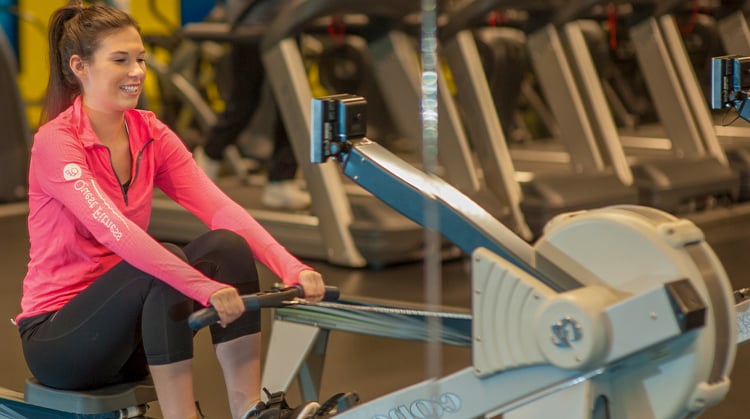
At the age of 12, Elizabeth did not think much of her frequent fainting spells. Despite experiencing them several times a day, she believed these moments, when she also lost vision and hearing, were related to getting up too fast.
But when the seventh grader fainted during a trail run, she and her family knew it was time to figure out what was going on.
Despite numerous blood tests, MRIs, CAT scans, and visits with cardiologists and neurologists, no one was able to reach a definitive diagnosis.
"Nobody could give me any answers, except for that I have low blood pressure and a low heart rate. And the only thing they could tell me was that I needed to drink more water and add salt to my diet," Elizabeth said.
As she began high school, the frequency of her fainting episodes increased to 9-10 times a day, keeping Elizabeth unconscious for hours, and, ultimately, bedridden. She also was experiencing widespread chronic pain, from headaches to stomachaches to sciatica. Eventually, she had to quit her sports and other extracurricular activities and was not even able to attend school.
"Everything that brought me joy was ripped away from me," she said.
She was eventually diagnosed with a sympathetic nervous system disorder, which was causing her widespread debilitating chronic pain and postural orthostatic tachycardia syndrome (POTS), an accelerated heart rate condition that is triggered by standing up, which was causing her vision and hearing issues, fainting, and fatigue.
Elizabeth and her family found a program at the Mayo Clinic Pediatric Pain Rehabilitation Center in Rochester, Minnesota. At 16, Elizabeth and her mom left the rest of her family behind to live in a hotel room and begin a 1-month treatment plan. Walking into the center on her first day, another teenage girl passed out right in front of Elizabeth. "I remember thinking 'I'm with people just like me," Elizabeth said.
Her treatment included intense daily work with a team of integrated health care professionals, including doctors, physical therapists, occupational therapists, cognitive and behavioral therapists, and nutritionists.
Elizabeth was supervised through aerobic and strength training, and gradually built her muscle and heart strength. She also was educated about her conditions to understand how and why her body was responding the way it was.
"The pieces were beginning to come together," Elizabeth said of her combined treatments. "Physical therapy was the thing that helped me the most."
After 1 month, Elizabeth returned home, started school immediately, and hasn't missed a day since she returned. She has maintained her recovery with a daily routine of exercise, including physical therapy. "I was back to my old self," she said.
Now a sophomore in college, Elizabeth is studying to become a physical therapist. She says her decision came after contemplating what had made the most impact of her life. "I automatically thought physical therapy," she said.
Listen to Elizabeth's story on Move Forward Radio.
Explore more patient stories like this one!
Learn more about chronic pain, headaches, and sciatica.
Physical therapists are movement experts who improve quality of life through hands-on care, patient education, and prescribed movement. You can contact a physical therapist directly for an evaluation. To locate a physical therapist in your area, visit Find a PT.


